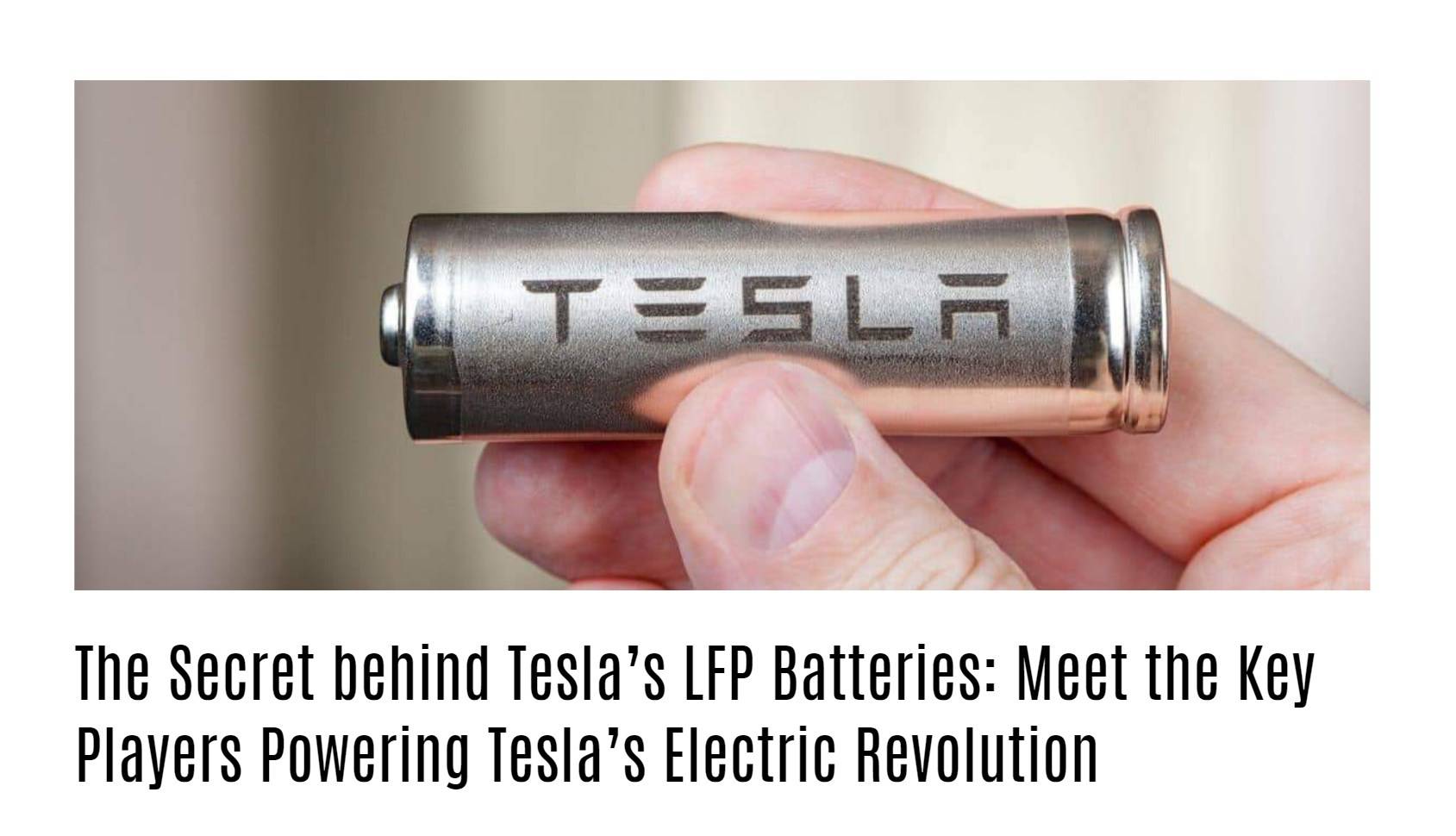Tesla’s use of Lithium Iron Phosphate (LFP) batteries is revolutionizing the electric vehicle (EV) market by providing a safer, more cost-effective alternative to traditional lithium-ion batteries. This article explores the current state of the LFP battery market, key players involved, and how Tesla is adapting its technology to meet consumer demands.
What is the current state of the LFP battery market?
The LFP battery market has seen significant growth, with a reported increase in market share from 17% in January 2021 to 31% by September 2022. This growth is largely attributed to major players like Tesla and BYD, who have embraced this technology for their electric vehicles. The trend indicates a shift away from nickel-rich batteries towards more sustainable and cost-effective options.Chart: Growth of LFP Battery Market Share
| Year | Market Share (%) |
|---|---|
| January 2021 | 17 |
| January 2022 | 26 |
| September 2022 | 31 |
Who are the key players in the production of Tesla’s LFP batteries?
Tesla collaborates primarily with Contemporary Amperex Technology Co. Limited (CATL), a leading Chinese battery manufacturer. CATL supplies prismatic LFP cells for models like the Model Y and Model 3 Standard Range Plus. Other notable players in the industry include BYD, LG Energy Solution, and SK On, all of whom are ramping up their production capabilities to meet rising demand.Chart: Key Players in LFP Battery Production
| Company | Role |
|---|---|
| CATL | Main supplier for Tesla’s LFP batteries |
| BYD | Significant producer and competitor |
| LG Energy Solution | Expanding into LFP battery production |
| SK On | Planning large-scale production by 2026 |
What advantages do LFP batteries offer over traditional lithium-ion batteries?
LFP batteries provide several advantages:
- Safety: They have a lower risk of thermal runaway and are less likely to catch fire.
- Cost Efficiency: Generally cheaper to produce than nickel-cobalt-aluminum (NCA) batteries.
- Longevity: They typically last longer, offering more cycles before degradation.
- Environmental Impact: They do not require cobalt, which is often associated with ethical mining concerns.
How is Tesla adapting its vehicle lineup to include LFP technology?
Tesla has integrated LFP batteries into its Model 3 Standard Range Plus and Model Y Standard Range models, particularly those manufactured in China. This adaptation allows Tesla to offer more affordable options without compromising safety or performance, catering specifically to regional market demands.
Why is local market adaptation important for Tesla’s success?
Local market adaptation enables Tesla to align its product offerings with consumer preferences and regulatory requirements. By utilizing locally produced LFP batteries, Tesla can reduce costs and improve supply chain efficiency while enhancing its competitive edge in markets like China, which is crucial for EV sales.
What are Tesla’s future plans for in-house LFP battery production?
Tesla plans to expand its production capabilities by developing its own LFP battery cells and cathodes. This move aims to reduce reliance on external suppliers like CATL and enhance control over battery quality and costs. The company has already begun hiring for positions related to this initiative, signaling a commitment to vertical integration.
How will Tesla’s strategy impact the broader EV market?
Tesla’s shift towards in-house production of LFP batteries could set a precedent for other automakers. As more companies recognize the benefits of using cost-effective and safer battery technologies, it may lead to increased adoption of LFP batteries across various EV models, further transforming the electric vehicle landscape.
Buy Wholesale Battery Tips
For buyers looking to purchase wholesale batteries or place OEM orders, partnering with a reputable manufacturer like Redway Battery is advisable. With over 13 years of experience in lithium battery production, Redway offers high-quality products tailored to customer specifications. To make OEM orders:
- Identify your specific requirements (capacity, size).
- Contact Redway’s sales team with your specifications.
- Review samples before placing bulk orders.
This process ensures you receive reliable products that meet your needs.
Industrial News
The demand for Lithium Iron Phosphate (LFP) batteries continues to rise as major manufacturers like SK On and LG Energy Solution expand their production capabilities. Recent reports indicate that these companies are investing heavily in new facilities aimed at increasing output to meet global demand. As automakers increasingly adopt this technology, it solidifies the position of LFP as a key player in the EV battery market.
Redway Expert Views
“Tesla’s commitment to integrating LFP technology into their vehicles highlights a significant shift towards more sustainable practices within the EV industry,” states an expert from Redway Battery. “As safety and cost-effectiveness become paramount concerns for consumers, we can expect other manufacturers to follow suit.”
FAQ Section
- What are the main benefits of using LFP batteries?
LFP batteries offer enhanced safety, longer lifespan, lower costs, and reduced environmental impact compared to traditional lithium-ion options. - Which models use Tesla’s LFP batteries?
Currently, the Model 3 Standard Range Plus and Model Y Standard Range models utilize LFP technology. - How does local production affect battery costs?
Local production can significantly reduce transportation costs and tariffs, making it more economical for manufacturers like Tesla. - What future developments can we expect from Tesla regarding batteries?
Tesla plans to produce its own LFP cells and cathodes, aiming for greater control over quality and supply chain management. - Are there any downsides to using LFP batteries?
While they are generally safer and cheaper, they have lower energy density compared to nickel-rich alternatives, which may limit range in some applications.



